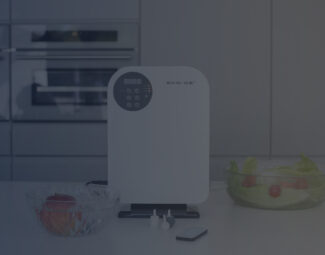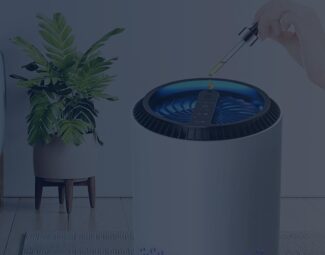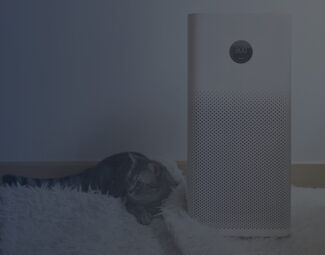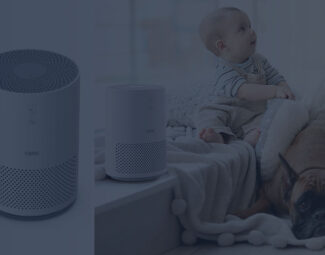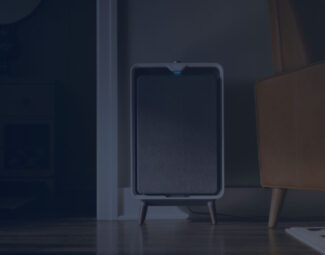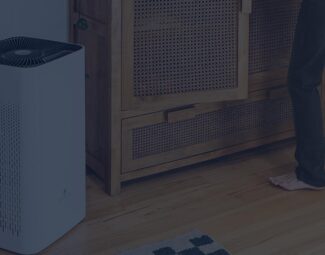W hen we discuss HEPA filters, we refer to filters that comply with a high standard of pollutant removal efficiency. It is a common component of air purification systems precisely due to the high success rate in removing the smallest, microscopic-sized particles from the air, managing to tackle contaminants that would easily pass through any other type of filtration media. Quite intricate in their functioning, in the following, we will look into the benefits presented by systems that use HEPA filtration and try to better understand how they work toward efficiently removing polluting particles encountered so that you get a better sense of how the HEPA classification impacts product quality.

Replacement HEPA Air Filter
HEPA Standard Defined
HEPA stands for high-efficiency particulate air, and this is an efficiency standard that applies to air filters that you find in air purifiers, vacuums, air conditioners, and a wide assortment of appliances and systems intended toward life quality improvement.
For a filter to comply with the HEPA standard, it must be rated to remove at least 99.9% of particles of all sizes, from large to as small as 0.3 micrometers or less from the air, focusing on removing impurities regardless of their nature, including dust mites, dust particles, pet dander, pollen, smoke, mold spores, and so on, pollutants that normally go unnoticed for the naked eye.
Evidently, HEPA standard compliance automatically implies granting of higher air quality as interception of all-size debris is something not encountered with other filtering media, like activated carbon. This, in turn, makes HEPA media a common addition to air purifiers designed for allergy relief as their ability to tackle smaller-size particles makes it invaluable in these systems and not only.
How HEPA Filters Work
It is a mechanical filter that forces the air through a fine mesh that traps harmful particles encountered in the air. They are made up of thousands of fine fibers that are specially positioned to ensure even microscopic-size pollutants that would normally pass through other filtration media won’t have a chance to escape and make it back into the air you breathe, hence the efficiency of systems that rely on HEPA technology.
Classification
As aforementioned, there are specific attributes filter media must flaunt to comply with the HEPA standard, more precisely to eliminate over 99.9% (the exact percentage depends on whether it refers to the European standard, which stands at 99.95% minimum, or to the U.S. DOE that stands at a minimum of 99.97%) of particles as small as 0.3 micrometers in diameter.
There can’t actually be different types of HEPA filters as the filtering media either complies with the HEPA standard or it doesn’t. However, you will find a lot of systems rated as using HEPA type or HEPA-like filters. This means that the media the products use, while high in efficiency most likely, doesn’t comply with the high-efficiency standard.
What does exist, however, is a classification of different levels of HEPA efficiency, and here you find True HEPA filters and medical-grade HEPA, the latter being generally used in pharmaceutical manufacturing due to the almost perfect performance toward pollutant removal. Medical-grade classification is especially sought-after in air purifiers for nurseries as it protects newborns from respiratory issues caused by airborne contaminations and aids in the proper development of a strong immune system as well.
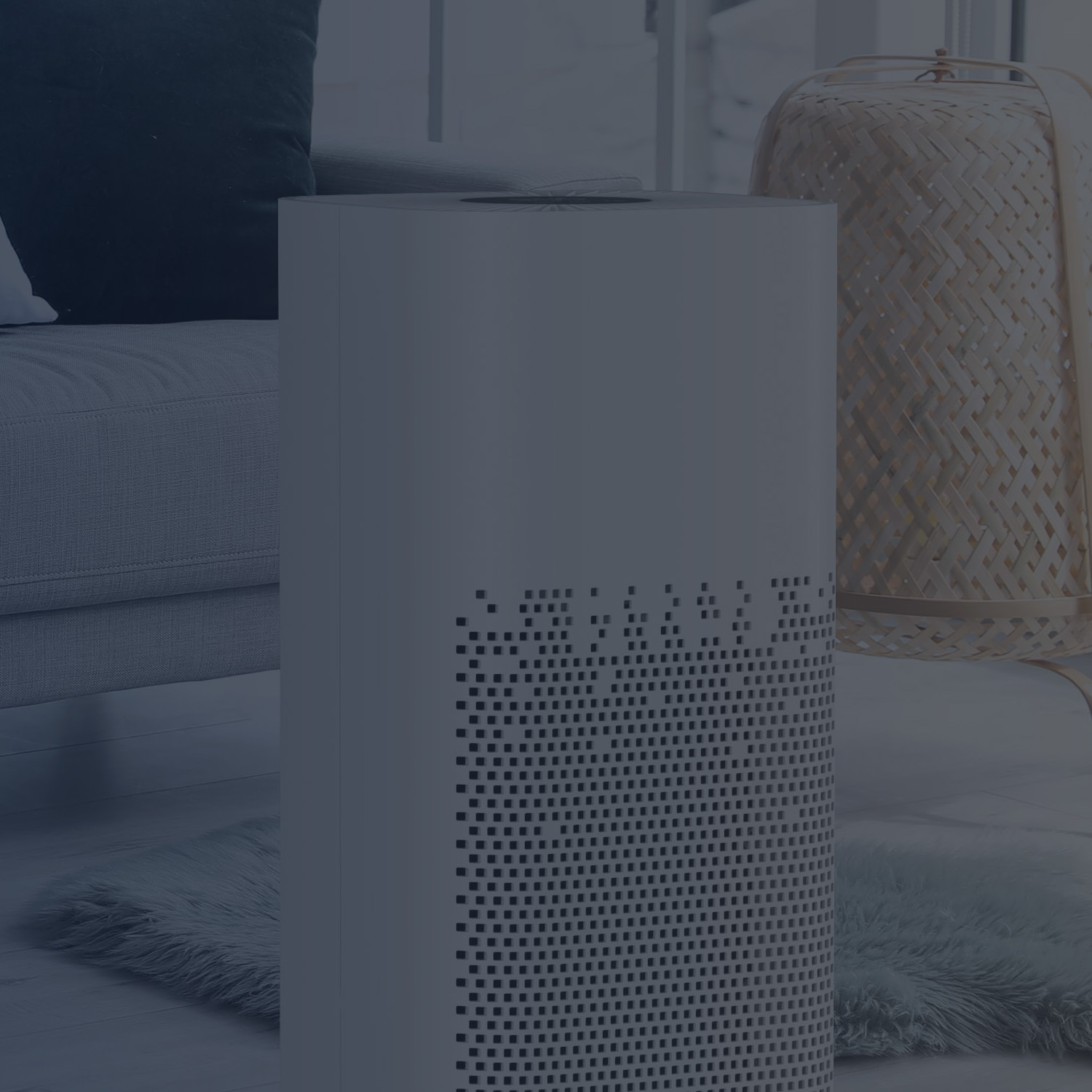
HEPA Air Purifier Cleaning the Air in Living Room
How HEPA Filtration Benefits You
- The human body has natural defenses and filtration mechanisms for some particles encountered in the air (these are found in the nose and throat). But their efficiency is limited as they generally tackle larger-size particles and allergens. Through its ability to filter out PM2.5 particles and smaller impurities encountered, HEPA media aids your body’s natural defense barrier, preventing pollutants from entering your system.
- In combination with a carbon filter, as usually seen in air purifiers for smoke removal, the media removes smoke particles, as well as fumes, gasses, and associated odors to leave behind fresher air that doesn’t pose a health threat to anyone inhaling it.
- Among the most common allergy-triggering factors is pet dander, which is impossible to get rid of with a purification means. As the dander is microscopic-sized, only with the use of HEPA-grade filtration can you eliminate it from the air and make it possible for someone who is sensitive to pets to sit in the same room where a furry animal has roamed around.
- As air quality inevitably increases due to the high-efficiency rate toward pollutant reduction, your health benefits, the immune system is boosted, and even better cardio health results from this ordeal.
Beware that proper HEPA filter maintenance is required if you seek to benefit from optimal performance on the system’s part. Depending on whether you are dealing with a washable or permanent media, you either need to wash it or vacuum it regularly. There are air purification systems that indicate when cleaning is due, whilst more basic systems that don’t come with the feature require you to check on it manually. When it comes to replaceable models, the task is generally required once per year, so upkeep costs won’t be all that demanding in the long run.
In the accompanying manual, you will find general guidelines related to upkeep, replacement, and any other information of value related to the filter. Make sure to check it out and comply with the provided instructions.
Final Words
HEPA technology is more frequently used in the manufacturing of air filtering systems for a good reason. While other media focus on targeting odors or larger-size particles, what makes HEPA more efficient is its inclusion of almost all-size particles in the sense that it doesn’t have trouble trapping even microscopic-size elements it encounters, regardless of their nature. When paired with an activated carbon filter, UV sterilization technology, or both, it results in almost 100% clearing of the air indoors from particles and microorganisms that can otherwise pose a health threat.



